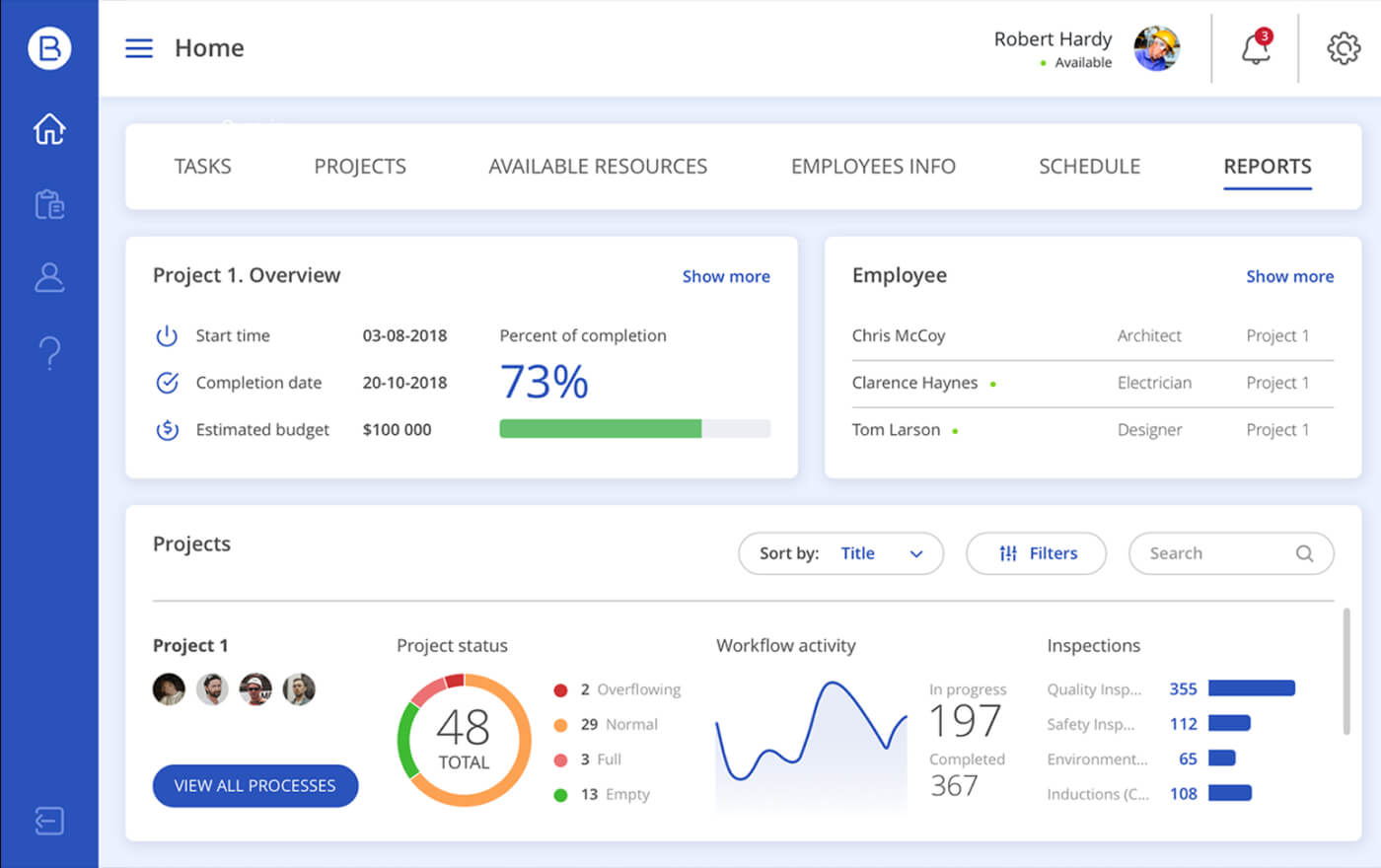Construction Software for Effective Project Preparation and Implementation
Tailored Building And Construction Monitoring Software Application: Optimizing Resource Allocation and Budgeting Strategies
In the world of contemporary building management, the value of customized software solutions can not be overemphasized. These advanced tools offer a nuanced strategy to enhancing resource appropriation and budgeting methods, necessary elements for effective job execution. By diving into the details of exactly how such software can boost source allocation approaches and fine-tune spending plan optimization methods, a clear pathway towards heightened job efficiency arises. In this digital age where accuracy and efficiency power supreme, exploring the influence of tailored building and construction administration software program on these important facets discovers a world of possibilities that can shape the future of the sector.
Advantages of Tailored Software Solutions
Customized software program remedies supply a myriad of benefits to building management companies looking for to boost effectiveness and simplify procedures. One key benefit is the personalization of functions to line up with the certain demands of the building and construction sector (australian construction software). By customizing software application options to attend to job administration, scheduling, budgeting, and source allowance, companies can enhance their process and achieve greater productivity. Additionally, customized software program enables smooth combination with existing systems, decreasing the requirement for manual information access and lessening errors.
Another benefit of tailored software remedies is the capability to offer real-time understandings and analytics. Building administration companies can take advantage of data-driven decision-making to keep track of project progression, recognize bottlenecks, and make adjustments promptly. This positive approach boosts project end results and assists companies stay on track with timelines and budgets.

Enhanced Source Allocation Techniques
Applying efficient resource appropriation techniques is critical for construction administration companies to maximize project results and make the most of efficiency. Boosted source allotment techniques entail strategically designating employees, tools, and materials to certain jobs to make certain optimum utilization of resources. One essential element of improved source appropriation is the ability to accurately forecast job demands and designate sources as necessary. By leveraging building and construction management software that offers real-time monitoring and reporting attributes, companies can dynamically readjust allowances as job see this site requires progress, causing enhanced performance this article and cost-effectiveness.
Moreover, improved source allowance methods make it possible for building firms to recognize and deal with potential traffic jams or resource restrictions proactively. By conducting normal evaluations of source usage and efficiency metrics, managers can make data-driven choices to redistribute sources efficiently and protect against delays. This aggressive method not just improves task timelines but additionally minimizes the threat of budget overruns because of ineffective resource appropriation.
Budget Optimization Strategies
To attain ideal financial efficiency in construction tasks, efficient budget optimization strategies play a critical role in ensuring expense control and project success. One vital strategy is the establishment of a detailed task spending plan that designates resources based on top priority and essential demands. By integrating these spending plan optimization strategies into construction monitoring software application, project stakeholders can boost monetary preparation, resource allocation, and general spending plan administration to drive task success and success.

Impact on Project Performance
Optimizing building and construction management software program can substantially boost job performance by improving interaction, improving cooperation, and facilitating data-driven decision-making. By streamlining task info, stakeholders can conveniently access real-time updates, decreasing hold-ups created by miscommunication or outdated information. Boosted collaboration functions make it possible for staff member to collaborate seamlessly, no matter their physical area, promoting a more natural and effective workplace. Furthermore, construction administration software can provide valuable understandings with information analytics, allowing job supervisors to make enlightened decisions promptly and precisely.
Additionally, the automation of regular tasks such as scheduling, budget tracking, and source appropriation can release up beneficial time for job teams to focus on crucial activities, inevitably quickening job shipment. The ability to monitor task progression in real-time and determine prospective bottlenecks makes it possible for aggressive analytical, avoiding issues from rising and triggering delays. Overall, the influence of tailored construction monitoring software application on project performance is obvious, providing an affordable benefit by optimizing operations and maximizing efficiency.
Future Trends in Building Software Program
As the building industry proceeds to develop, innovations in innovation are forming the future landscape of building software program options. One substantial pattern coming up is the raising integration of resource synthetic knowledge (AI) and artificial intelligence capacities in construction software program. These technologies have the potential to change how building and construction tasks are handled by making it possible for anticipating analytics, automated decision-making processes, and improved job understandings.
Another future trend in building and construction software program is the expanding focus on cloud-based remedies. Cloud technology offers increased adaptability, scalability, and availability for building and construction teams, enabling real-time collaboration and information sharing across project stakeholders. This change towards cloud-based software is anticipated to enhance job efficiency, simplify communication, and improve overall job results.
Furthermore, the increase of Structure Information Modeling (BIM) is expected to proceed shaping the construction software landscape. BIM software application assists in 3D modeling, visualization, and data management, causing boosted project control, decreased errors, and boosted project end results. Embracing these future patterns in building software program will be essential for business aiming to stay affordable and drive advancement in the market.
Conclusion
Finally, tailored building and construction administration software supplies many advantages such as enhanced source allowance methods and budget optimization strategies. This software has a considerable effect on project effectiveness by streamlining procedures and boosting overall efficiency (evolve construction). As technology proceeds to development, future fads in building software application are anticipated to further optimize source allotment and budgeting strategies for building and construction tasks